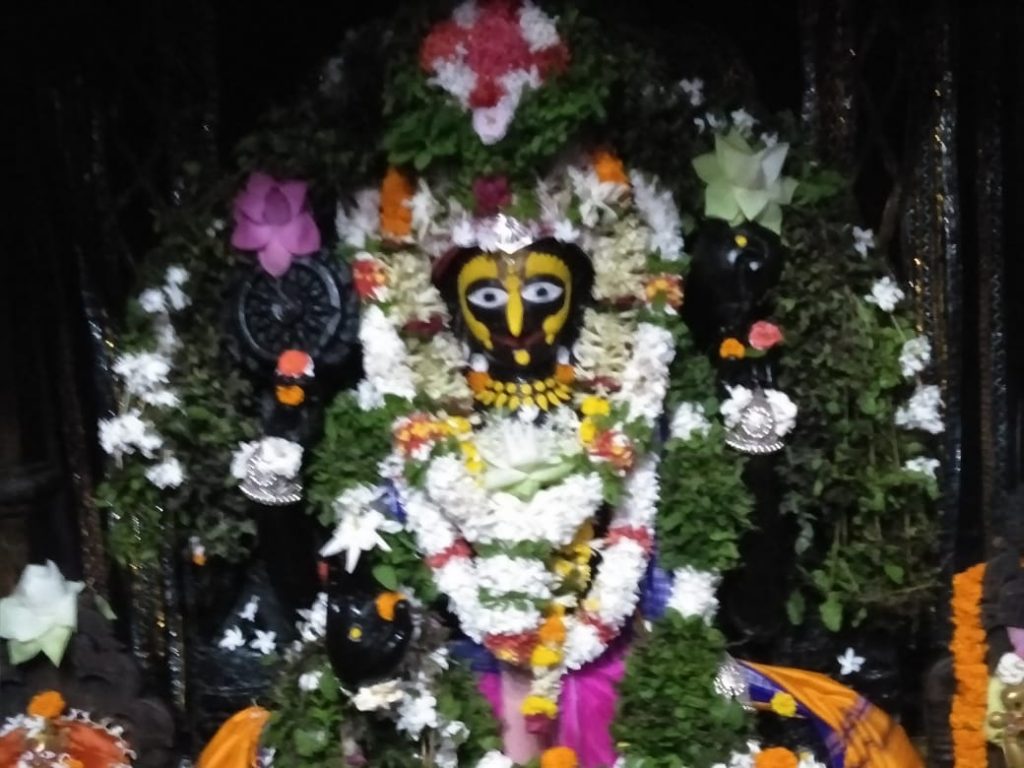When Lord Jagannath and his siblings remain out of public view during ‘Anavasara,’ devotees can visit the Alarnath temple to seek the Lord’s blessings
Many devotees consider Lord Jagannath as a ‘living God on earth.’ They believe that the Lord leads a life much like humans. So, like human beings, Lord Jagannath and his siblings Lord Balabhadra and Devi Subhadra too fall sick. When they do, they take 15 days to recover and reappear before their devotees two days ahead of Rath Yatra.
The story goes that after they take bath on Debasnana Purnima, the Trinity falls sick and takes rest in a closed room inside the temple. This period, when the deities stay in the sick chamber, is known as ‘Anavasara’ which means lack of opportunity.
These are the only days in the year that the deities remain out of public view. However, that doesn’t halt the daily rituals in the temple. Although the sanctum sanctorum remains closed for devotees, they can offer their prayers in front of ‘Patti Dian,’ the representative image of the Trinity. Devotees also get to see some beautiful pattachitra in front of the main entrance or the Singhadwara.
‘Patti Dian’ is also known as ‘Anasara Patti’ or ‘Anavasara Patti.’ Besides the three main pattachitra paintings, another small Anasara Patti is placed as the representative image of Lord Jagannath at the right side of Singhadwara for public viewing.
“The pattachitra paintings are no ordinary works. Every year, these paintings are made by artists of the Chitrakar servitors on freshly woven tussar cloth with colours made of natural ingredients. The artists make the patta paintings only a fortnight before the Debasnana Purnima when the idols are taken to the sick chamber,” says Nihar Ranjan Panda, a priest at the Jagannath Temple.
It is believed that those who cannot visit Lord Jagannath during his stay in the sick chamber can get the blessings of the deity at the Alarnath temple. The temple is located in Brahmagiri, around 25 km from Puri, a popular religious place for all Krishna devotees. During the Anavasara period, which generally falls in the month of June, millions of devotees visit Alarnath temple to offer their prayers.
“During the Anavasara period, the temple servitors offer rice porridge, known as ‘Kheeri’, to the Lord. Devotees throng the temple during this period to receive the blessings of the Lord and taste a pot of the famous holy ‘Kheeri’,” says Braja Kishore Panda, a priest at Alarnath temple.
Jamini Prasad Samanta from Bhubaneswar, who recently visited Alarnath temple, says, “Visiting the temple makes you realise the omnipresence of the Lord. You feel that Lord Jagannath is present in this temple. There is something special about the kheeri too. No other kheeri can match its taste nor can you prepare it at home.”
It is believed that devotees going to Alarnath temple during the Anavasara period get the same feeling of satisfaction as seeing the Trinity at Jagannath temple.
Legend
Narrating the story behind the Alarnath temple, Braja Kishore Panda says, “It is believed that in Satya Yuga, Lord Brahma worshipped Lord Vishnu here on top of a hill. One day, Lord Vishnu appeared and said, ‘I am very pleased with your devotion. Make a four-armed figure of mine holding shankha, chakra, gada, and padma from a piece of black stone.’ Lord Vishnu also said, ‘This place will be called Brahmagiri (Brahma’s Hill) because you have worshipped me here’.”
Another legend is that the rulers of Alwar in Rajasthan established the temple here. The temple was known as Alwarnath and later, Alarnath.
The tale of Sri Chaitanya
Saint Sri Chaitanya Mahaprabhu, who was an ardent devotee of Lord Jagannath, used to visit the temple at Puri often. Yet, as per the ritual, once during Anavasara period, the saint was restricted from visiting the deities. With a heavy heart, he left Puri and walked along the coast in search of the Lord. It is believed that Lord Jagannath, impressed with his devotion, appeared in his dream and advised him to visit Alarnath temple in Brahmagiri. Accordingly, he went there to get a view of the Lord. There is a stone in the temple on which, it is believed, the saint stood to get a view of the Lord. According to people, a mark on the stone shows that the saint sat there and worshipped the Lord.
SOYONG, OP
